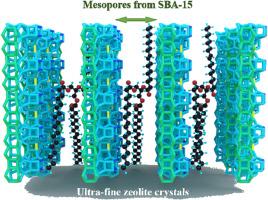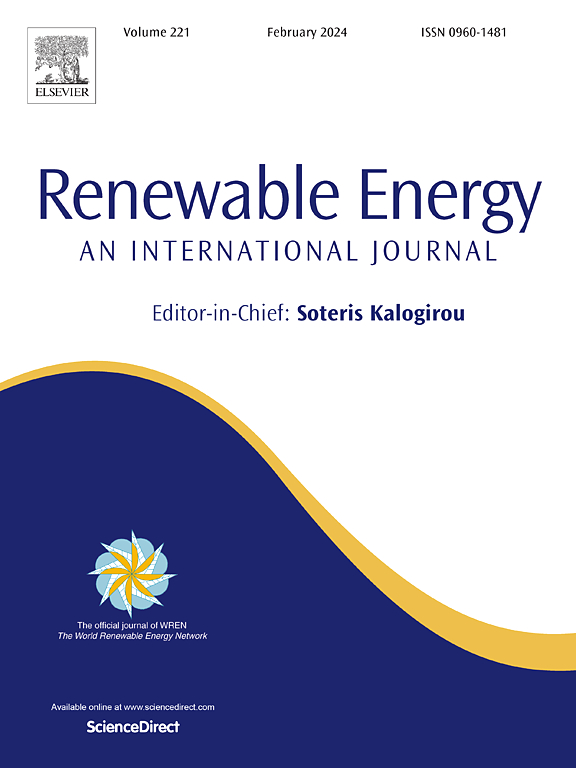用于将废弃食用油转化为生物柴油的高效β-沸石催化剂
IF 9
1区 工程技术
Q1 ENERGY & FUELS
引用次数: 0
摘要
将废弃食用油转化为生物柴油可带来双重效益:减轻环境污染和实现废物循环利用。胚胎沸石因其部分形成或较为开放的沸石结构,具有较高的酸位点可得性,可解决传统沸石催化剂在大分子反应物过程中面临的扩散受限、酸位点不可得等问题。本研究以介孔 SBA-15 为自人工硅源,通过固态转化策略制备了一系列胚胎 Beta 沸石。NH3-TPD 和傅立叶变换红外吡啶吸附证实,在这些无定形胚胎催化剂中产生了布氏酸位点。通过零长度柱法获得的甲苯扩散特性证明,沸点化程度越高,扩散活化能越大。SBA-15 底物产生的有序介孔结构(2 至 10 nm)与中等酸性位点(∼ 88 μmol g-1)的结合产生了协同效应,使 SBEA-3 胚胎催化剂具有显著的催化性能,在 20 次循环测试中转化率≥95%,甲基苯甲酸酯产率超过 90%。本文章由计算机程序翻译,如有差异,请以英文原文为准。

A high-efficient beta-zeolitic catalyst for conversion of waste cooking oil towards biodiesel
The conversion of waste cooking oil into biodiesel can bring about dual benefits: alleviating environmental pollution and realizing waste recycle. Embryonic zeolite has highly accessible acid sites because of the partially formed or more open zeolitic structure, which can solve problems such as diffusion limitation and inaccessible acid sites that the traditional zeolite catalysts face in the process of macromolecular reactants. In this work, a series of embryonic Beta zeolites were prepared by using mesoporous SBA-15 as a self-sacrificial silica source via a solid-state transformation strategy. NH3-TPD and FT-IR pyridine adsorption confirm that Brønsted acid sites have been created in these amorphous form embryonic catalysts. The diffusion property of toluene obtained by a zero-length column method proved that the higher the zeolization degree, the greater the diffusion activation energy. The synergistic effects resulted from the combination of the ordered mesoporous structures (ranging from 2 to 10 nm) stemming from the SBA-15 substrate and the moderate acid sites (∼88 μmol g−1) offered the embryonic SBEA-3 catalyst with remarkable catalytic performance for ≥95 % conversion during 20 times cycling tests and more than 90 % methyloleate yield.
求助全文
通过发布文献求助,成功后即可免费获取论文全文。
去求助
来源期刊

Renewable Energy
工程技术-能源与燃料
CiteScore
18.40
自引率
9.20%
发文量
1955
审稿时长
6.6 months
期刊介绍:
Renewable Energy journal is dedicated to advancing knowledge and disseminating insights on various topics and technologies within renewable energy systems and components. Our mission is to support researchers, engineers, economists, manufacturers, NGOs, associations, and societies in staying updated on new developments in their respective fields and applying alternative energy solutions to current practices.
As an international, multidisciplinary journal in renewable energy engineering and research, we strive to be a premier peer-reviewed platform and a trusted source of original research and reviews in the field of renewable energy. Join us in our endeavor to drive innovation and progress in sustainable energy solutions.
 求助内容:
求助内容: 应助结果提醒方式:
应助结果提醒方式:


